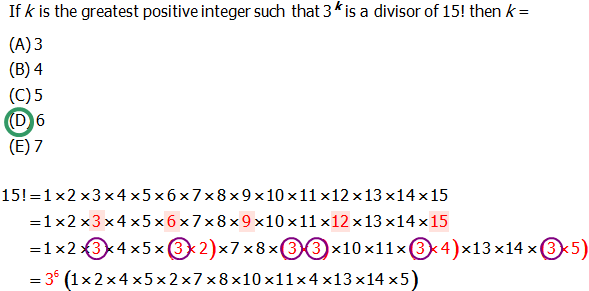
GRE Prep Club Daily Prep
Thank you for using the timer - this advanced tool can estimate your performance and suggest more practice questions. We have subscribed you to Daily Prep Questions via email.
Customized
for You
Track
Your Progress
Practice
Pays
Not interested in getting valuable practice questions and articles delivered to your email? No problem, unsubscribe here.
Quantitative GRE question, but also found on GMAT??
[#permalink]
 26 Jan 2017, 16:49
26 Jan 2017, 16:49
1
1
Bookmarks
Question Stats:
 100% (00:00) correct
100% (00:00) correct
 0% (00:00) wrong
0% (00:00) wrong  based on 1 sessions
based on 1 sessions
Hide Show timer Statistics
Got this question on Magoosh.com, but then I GOOGLED it to understand how to answer it and found that it has also been asked on GMAT question bank as well? How is that possible? Do these questions repeat?
If k is the greatest positive integer such that 3k is a divisor of 15! then k =
3
4
5
6
7
If k is the greatest positive integer such that 3k is a divisor of 15! then k =
3
4
5
6
7
Re: Quantitative GRE question, but also found on GMAT??
[#permalink]
 26 Jan 2017, 19:01
26 Jan 2017, 19:01
2
Expert Reply
If its a question created by Magoosh then it is quite possible that they have used it in their GMAT Prep materials as well.

Regards
Regards
Re: Quantitative GRE question, but also found on GMAT??
[#permalink]
 28 Jan 2017, 21:15
28 Jan 2017, 21:15
sandy wrote:
If its a question created by Magoosh then it is quite possible that they have used it in their GMAT Prep materials as well.

Regards
Regards
But I mean...is that...I don't know how to describe it, but "weird?" I thought they were different exams?









